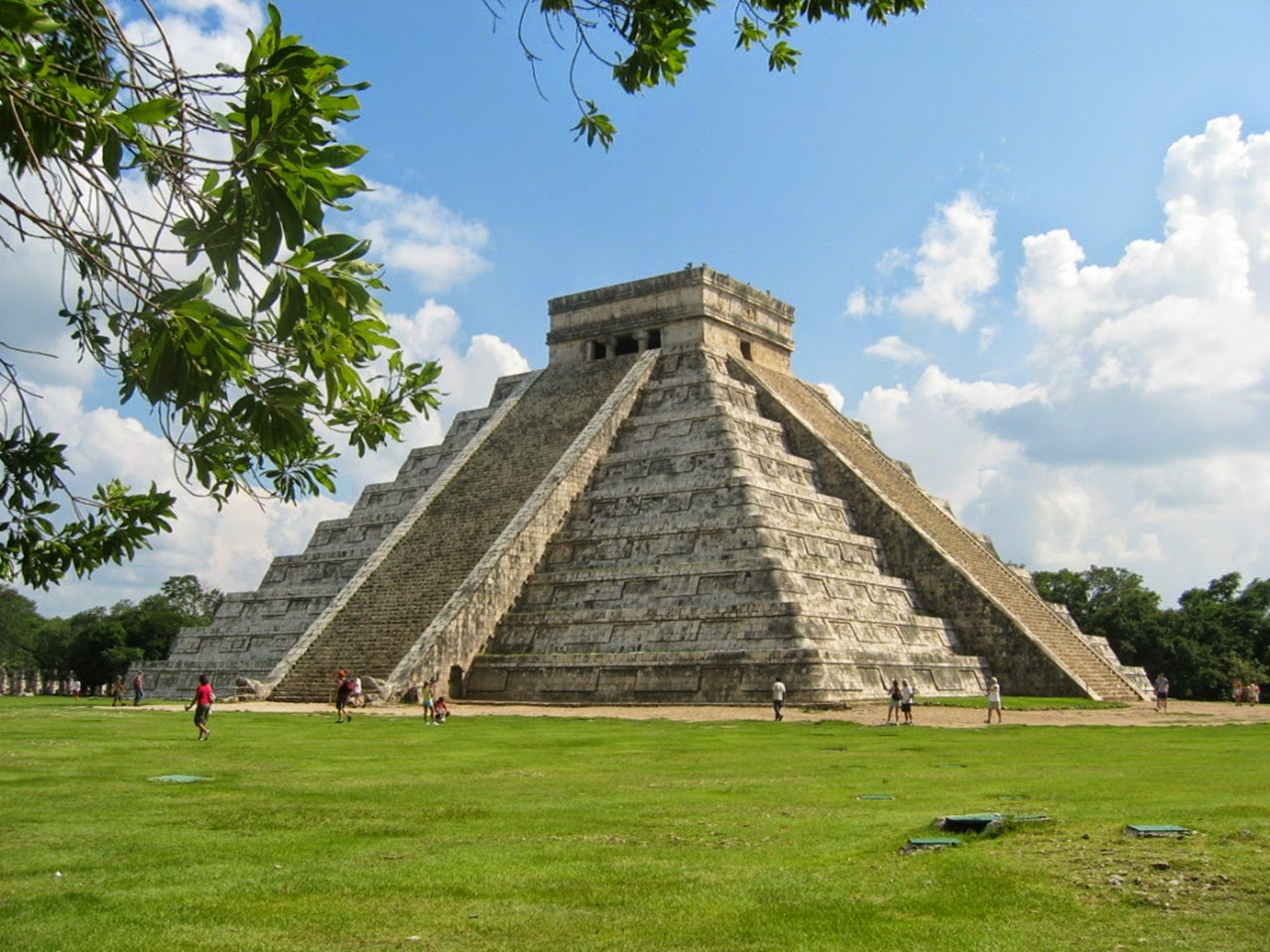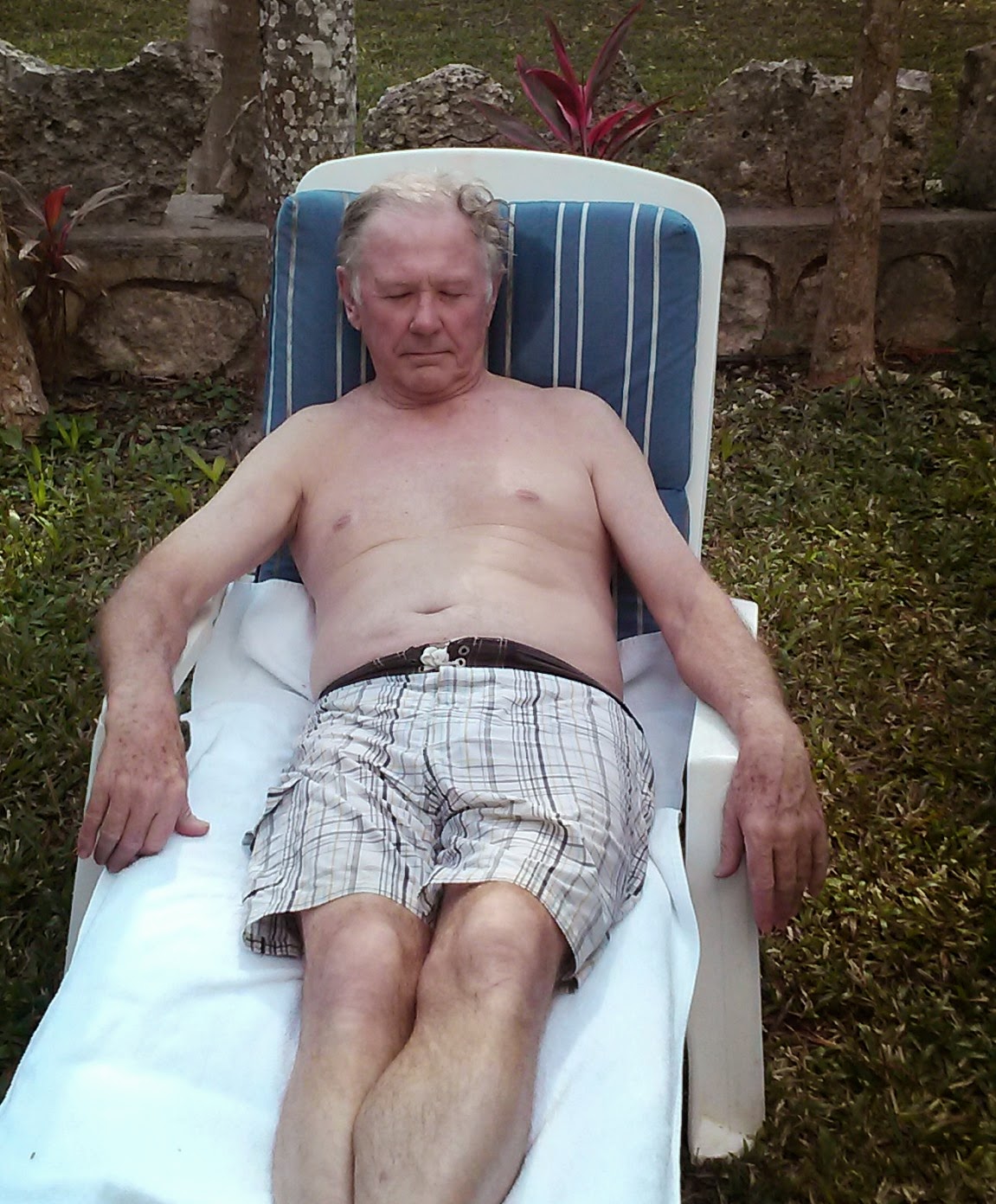With only a few days here and much to see, we've been reading about the history of the area.
The Mayans had an advanced civilization and founded the City of Chichen Itza in around 700 AD and by the 5th Century AD, had established scores of other cities and settlements throughout southern Mexico and Central America.
They had a written language, a knowledge of astronomy, an accurate calendar and were skilled engineers, so when the Spanish Conquistadores arrived here in the 16th Century, they found a society that was in many ways more advanced beyond that of Europe - and also a civilization that worshipped multiple gods, with an insatiable desire for blood.
These human sacrifices revolted the Spaniards and as the Pope had given them carte blanche in any lands they discovered, as long as they "taught the heathens the word of the Christian God", they had all they needed to destroy the Mayan libraries and obliterate their culture, forcing them to adopt the Roman Catholic Church.
 |
Apart from the Mayans' massive structures, we only have bas-reliefs on walls
and inscriptions on stone to provide a glimpse of their civilization. |
So, today we are off to the Ruins, with our knapsacks, bottles of water, cameras, hats and dark glasses! Coaches, buses and taxis have been passing our hotel nonstop since 8.30 am so we're joining hundreds of other tourists who have swarmed in here for the Chichen Itza experience.
In the centre of the Grand Plaza stands the Temple of Kukulkan, constructed to pay homage to the Mayan snake deity Kukulcan, the plumed serpent. The Pyramid was designed so that on the annual Spring Equinox, the afternoon sun causes a shadow play making it seem that a huge serpent is coming down the steps.
 |
The Temple of Kukulkan.,
The pyramid has nine level faces with 52 panels (equal to our modern year with 52 weeks) and 365 steps each denoting a day of the year. |
 |
Temple of the Warriors
There are 200 of these pillars that once supported the roof of a massive building |
 |
The Great Ball Court
Using only shoulders, chest or hips, players had to launch a leather ball so it passed though rings set high up on the walls.
Both walls are carved with scenes of ball players with one showing a headless player with blood shooting from his neck.
After the game either the winning or losing captain was beheaded by the High Priest as an offering to the Gods.
It is unclear from the wall carvings which one had that honour! |
 |
The El Caracol Observatory
This building sits on a huge platform and gave the Mayans an unobstructed view of the sky above the jungle vegetation and trees
|

















































